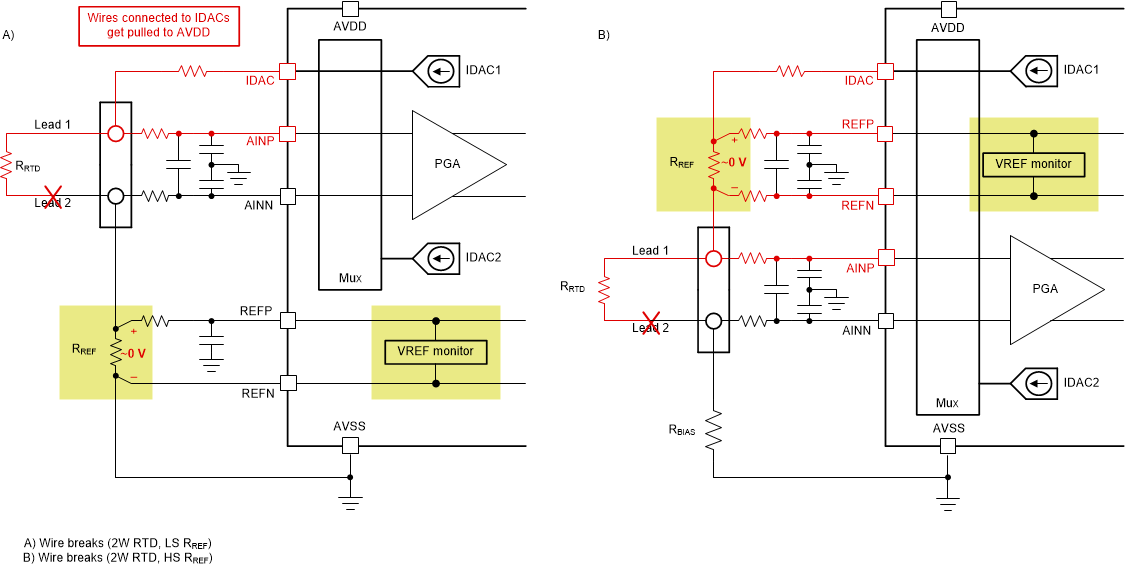SBAA483 February 2021 ADS1120 , ADS112C04 , ADS112U04 , ADS114S06 , ADS114S06B , ADS114S08 , ADS114S08B , ADS1220 , ADS122C04 , ADS122U04 , ADS124S06 , ADS124S08 , ADS125H02 , ADS1260 , ADS1261 , ADS1262 , ADS1263
- Abstract
- Trademarks
- 1Introduction
- 2Features Used to Detect Wire Breaks in RTD Systems
- 3Wire-Break Detection Methods for Different RTD Configurations
- 4Settling Time Considerations for RTD Wire-Break Detection
- 5Summary
- A How Integrated PGA Rail Detection Helps Identify Wire Breaks
- B Pseudo-Code for RTD Wire-Break Detection
3.1 Wire-Break Detection Using 2-Wire RTDs
Two-wire RTDs provide low-accuracy measurements because no option exists to compensate for lead resistance. However, 2-wire RTDs are low cost and easy to implement, making them attractive for cost-sensitive applications. Moreover, wire-break detection in 2-wire RTDs is straightforward, although determining which wire (or wires) is no longer attached is not possible.
Figure 3-1 shows what happens when lead 2 breaks in the 2-wire RTD configuration: Figure 3-1a shows the low-side RREF implementation and Figure 3-1b shows the high-side RREF implementation. Although Figure 3-1 shows a break in lead 2, the same detection scheme applies to a break in lead 1 or if both wires break.
 Figure 3-1 Lead 2 Broken in a 2-Wire RTD
Implementation: Low-Side (Left) and High-Side (Right) RREF
Figure 3-1 Lead 2 Broken in a 2-Wire RTD
Implementation: Low-Side (Left) and High-Side (Right) RREFFor both reference configurations, a broken wire (or wires) results in no current flow through RREF because the path to ground is disconnected. This event drops the voltage across RREF to 0 V, thereby setting the VREF monitor flag high. Therefore, to identify a break in either wire in a 2-wire RTD configuration using either a low-side or high-side RREF, use the VREF monitor in the ADC. Table 3-1 summarizes the wire-break detection method and expected results for all wire-break conditions using a 2-wire RTD.
| Lead 1 | Lead 2 | Wire-Break Detection Method and Result |
|---|---|---|
| Connected | Broken |
|
| Broken | Connected | |
| Broken | Broken |